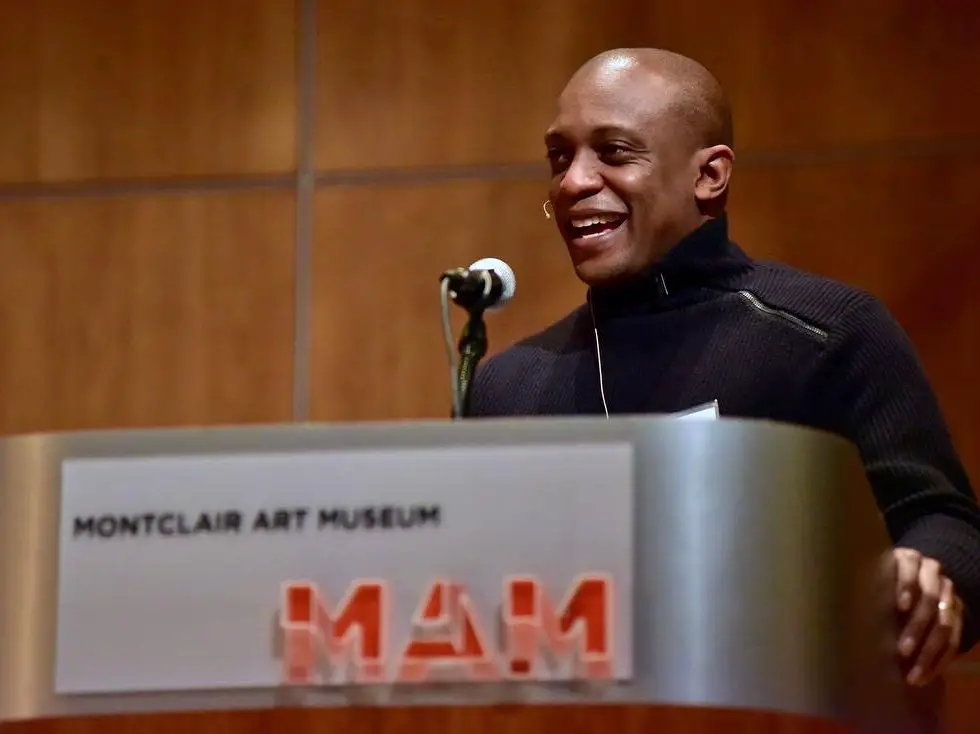On a weekend afternoon some weeks ago, as America first began to reel from the death of George Floyd in Minneapolis, my brother and I were discussing racism. I’d recently finished “Chokehold: Policing Black Men” by Paul Butler and shared with my sibling the general biases of the criminal justice system. However, my brother found all of it dubious. “Show me the facts,” he demanded. “I want evidence.” While “Chokehold” was chock-full of stats and graphs about Black arrests and incarceration in the United States, we made a mistake in discussing them as if they were untouchable nuggets of wisdom. It wasn’t until I got my hands on “The Condemnation of Blackness: Race, Crime, and the Making of Modern Urban America,” published in 2010 and written by Khalil Gibran Muhammad, that I discovered we were walking a fine line in our discussion of prison demographics and arrest records. On one side of this barrier lay a century-long discourse crafted by white actuaries that used numbers to transform Black people into criminals.
This toxic equation is all too familiar, yet the historical precedent that allowed such a sentiment to develop is not discussed nearly as often as other periods in American history. Throughout the past month and a half, we’ve taken the time to reflect on the civil rights movement and how it relates to Black Lives Matter. Understanding the issues at hand, comparing photos from the 1960s to those taken in 2020 and learning more about what Black Americans face every day has made people realize that racial equality was not entirely gained in the 20th century. Rather, it remains a constant struggle even today.
However much we reference and venerate modern and contemporary activists for Black rights in the U.S., from Martin Luther King, Jr. to Rachel Elizabeth Cargle, there is still an aspect of the Black experience that remains untouched. Across the street from the house of equality for all peoples, there lies a darker cavern of division, biological inspection, contaminated data and pseudoscience.
The adage goes, keep your friends close but your enemies closer. When it comes to discourse on race in America, this could not be overstated. Although it is essential to know the vanguard of activists paving the way for a more equitable future, it is also imperative to explore the other side, to cross the street of race, to venture away from love and explore the hate.
Muhammad does just that with “The Condemnation of Blackness.” Through a historical account of the Progressive Era in the United States, Muhammad unearths a period of American history just as important to understanding race relations — if not more so — than those aforementioned times at the forefront of public thought right now. From 1890 to the 1930s, the equation of Blackness with criminality solidified through older arguments based on incomplete and dangerously unscientific statistics. Not only did these have immense influence over American society in a postbellum nation, but it continues to shape the relationship between Black people, law enforcement and the public today.
A key fact of the matter is that 1890, while perhaps marking the decadal eve of the Progressive Era, also marked the first census in which the rising number of Black prisoners was indexed. Because of the way in which this information was interpreted — as an indication of Black people’s proclivities for vice as opposed to a sign of prejudice — the entire Black population, especially in Northern city slums, became criminals under the public eye.
Although a variety of opinions existed even in the early days of progressivism, “The Condemnation of Blackness” traces a disturbing trajectory of change in how Black people were distinguished from white people. Before the Civil War, chattel slaves were regarded as such because of physical properties. Despite Emancipation and the efforts of Reconstruction, biological characteristics remained key evidence for many social scientists in the late-1800s and early 20th century.
One of the most notable proponents of this mode of thinking was Frederick L. Hoffman, a German immigrant who traveled across the country in search of work before finally settling in Newark, New Jersey, to work for an insurance firm. The position piqued Hoffman’s interest in statistics, which he found to be incredibly useful to combat social injustice. However, the crowning achievement of his research, “The Race Traits and Tendencies of the American Negro,” published in 1896, used data for all the wrong reasons. Rather than observing high mortality rates among Black Americans as a telling sign of oppression, he instead concluded that Black people were destined to become extinct due to racial inferiority.
The commercial success of this work reveals the popular sentiment of the day: The genetic makeup of Black people meant they were simply unfit for modern civilization. However nightmarish such a consensus may be, the alternate theories about race provided by Black scholars like W.E.B. Du Bois and Ida B. Wells received nowhere near the level of attention granted to Hoffman’s work. Over time, though, biological differentiation was succeeded by another outlook, one new but just as horrifying.
The famed social scientist Franz Boas, another German American and an ideological foil to Hoffman, pioneered this shift in public discourse on race in America. In his 1911 work “The Mind of Primitive Man,” Boas refuted racial inferiority arguments in favor of one that acknowledged the wrongs done to Black Americans, but ultimately hypothesized the creation of a toxic culture among the race that made it supremely difficult for equality to be achieved.
As well-intentioned and progressive as the cultural argument may have been in its day, it nevertheless gave way to another way of thinking about Black Americans as their own worst enemies. To blame culture is to blame Black people, which inevitably steers the conversation away from social activism and toward prejudice. Notably, in Philadelphia, many charitable organizations, from the Octavia Hill Association to the College Settlement House, helped European immigrants get on their feet but often neglected the poorest of the poor: African Americans. The high level of crime in urban, predominately Black areas, despite being analogous to that of Irish, Italian and Polish populations, only strengthened calls for self-improvement among Black people, rather than structural reform in social uplift initiatives.
The issue, as stated before, extends beyond theory and into the statistics used to document Black Americans. While we often want cold, hard facts to support our positions on race, just because some numbers and tables exist doesn’t mean they are beyond subjectivity. The fact that African Americans are imprisoned at much higher rates than white Americans may spark movements for abolition, but it could also be used to suggest that Blacks are more dangerous than whites. It is society’s collective imperative to address the absence of objective data about race in America, both from the past and in the current moment. The extent to which one finds 2020 reflected in the arguments of Hoffman and Boas reveals just how far the country has to go before true equality is achieved and the condemnation of Blackness is considered taboo.
Muhammad covers a lot of ground in “The Condemnation of Blackness,” spanning decades of history often neglected in discussions of racism in the United States. Yet through the confluent analysis of myriad theories on race that emerged at the turn of the century, Muhammad brings the central issue to light: the racial, cultural and statistical separation of Blacks from all white people in America.

















